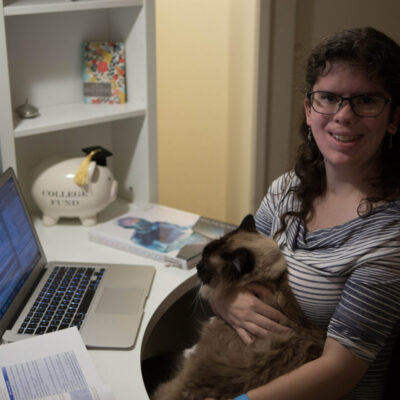Patricia Pierry Humanities and Social Science
Inductive Inferences
A defining feature of human language is its creativity; we can express an infinite number of ideas from a limited number of words. One well-analyzed source of such creativity is the rules of grammar, which let us combine words into sentences in new ways. However, we know much less about another source of creativitythe flexible use of words, known as lexical flexibility, which allows us to use one word to express multiple different meanings. For example, the word chicken can mean both an animal and meat.
My research, with the final goal of a senior thesis, asks how children initially learn such flexible words, and in particular, whether they initially understand that the different meanings of these words are in fact distinct. Of critical interest is whether children will generalize facts from one meaning of a flexible word to another, distinct meaning, and whether this depends on the two meanings receiving a shared label. Will children think that a chicken animal freezes well if they have learned that chicken meat freezes well? I intend to also run follow-up studies addressing similar concepts, such as childrens behavior when presented with homophones, to provide an interesting contrast to childrens treatment of flexible words. The results of this study will inform theories of word learning by revealing whether young children initially conflate the different meanings of flexible words or instead represent them as distinct but related meanings.
Message To Sponsor
I am sincerely grateful for the opportunity to pursue research over the summer thanks to SURF and the JSB Fund donors. As a bilingual Brazilian-American, I have always been fascinated by language and language acquisition. This grant gives me the chance to spend the summer wholeheartedly pursuing a project in a field that I love. I want to thank the program and its donors for allowing me to engage in research that will help me develop my own academic career and inform future studies in the field.